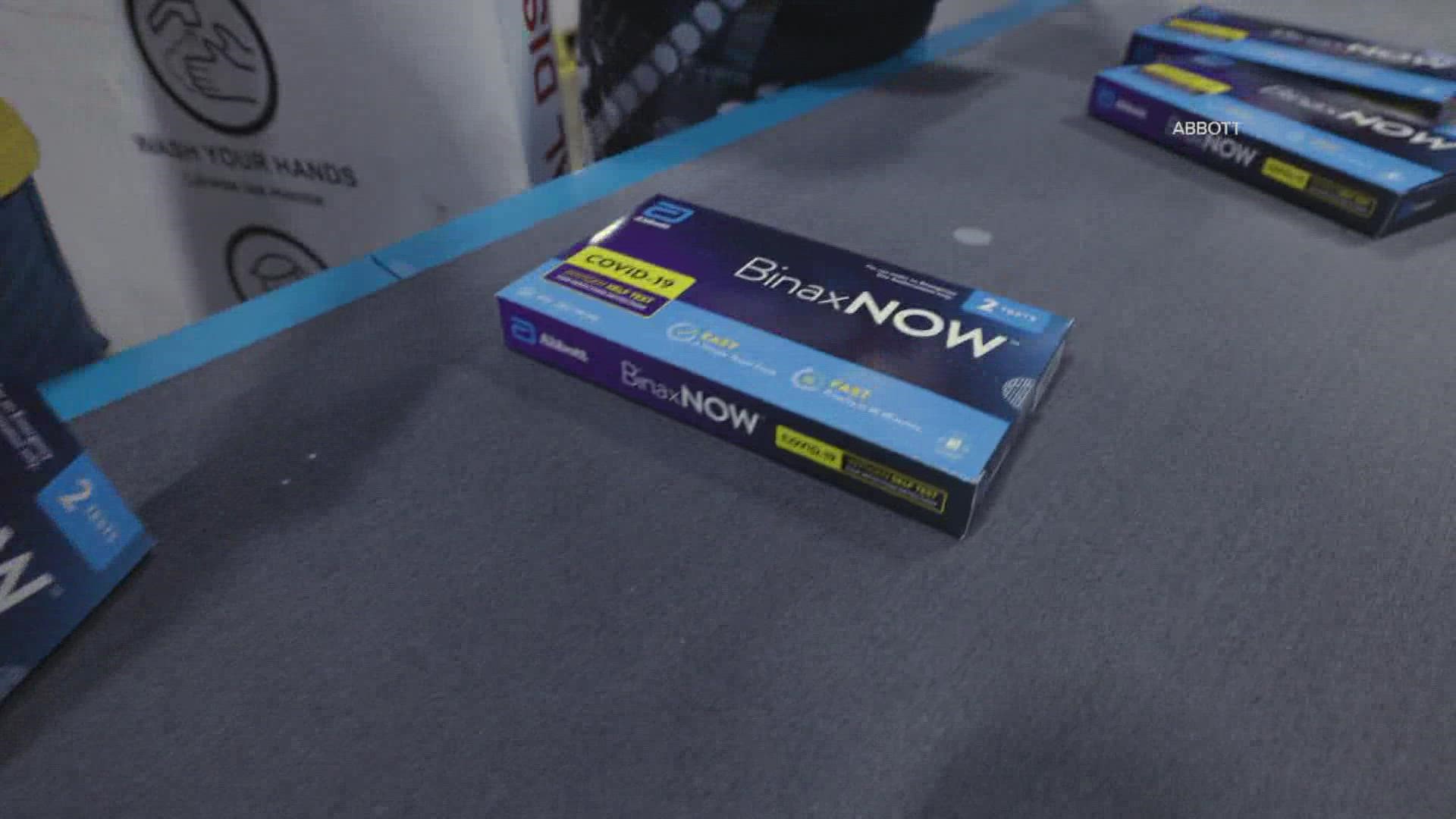AUGUSTA, Maine — Millions of Americans are waiting on shipments of free COVID test kits to arrive at their doors as more people head indoors during the winter months.
When subjected to extreme cold, there is concern that those tests could become less reliable, less accurate, or less effective.
Justin Gifford, executive director for Children’s Residential Services for Becket Family Services, said he ordered a case of test kits, which arrived over the weekend and ended up sitting outside the office until it reopened on Monday.
He noticed that the box recommends tests be stored between 35.6 and 86 degrees Fahrenheit, which made him question if the tests were still effective.
“We were concerned that since they were out so long, they probably all froze, and we questioned whether they were going to work for us or not,” Gifford said. “The case of Binax tests were covered with snow and were probably frozen.”
THE QUESTION
“Will Binax NOW COVID tests still work if they are exposed to extreme cold or heat?”
THE SOURCES
Maine Center for Disease Control and Prevention Director Doctor Nirav Shah
THE ANSWER
All three sources told NEWS CENTER Maine that, yes, the tests can still be accurate if they are exposed to temperatures outside that range (35.6 to 86 degrees Farenheit), but some points need context.
What NEWS CENTER Maine found
1. The tests can only last in those extreme conditions for up to two days.
An Abbott Labs spokesperson said in a statement:
[I]f the test is stored outside the temperature range for a relatively short period — for a couple of hours up to a day or two — it will be acceptable to use, and it’s vital that [the] test and its components be used at room temperature.
The U.S. FDA said, “test developers perform stability testing to ensure that the test performance will remain stable when tests are stored at various temperatures, including shipping during the summer in very hot regions and in the winter in very cold regions.”
2. Do not use the tests until all the pieces have been brought up to room temperature for at least two hours.
“You do want to give that test kit time to come back up to room temperature before you use it just to make sure all the reagents or chemicals in the kit have had time to make sure that they’re fully active,” Shah said during the state’s COVID briefing on Jan. 19, 2022.
The U.S. FDA backs this up:
“Bring the test to room temperature for at least two hours before using it, and check that the test line(s) appear as described in the instructions,” the FDA wrote in a tweet. “However, if tests are used while still cold, it may impact performance. This is why we recommend bringing the test to room temperature for 2 hours before using it.”
As for Gifford, he said they tested the accuracy of the swabs by using them on people they knew were COVID positive from a previous PCR test.
He said the results came back that those people were negative for the virus, which means his tests may have been exposed to extreme cold for too long. Rapid tests are also not as reliable as PCR tests, so other factors could have caused those people to test negative.
“In a congregate care setting, the health and safety of our clients and the staff is super important, and we do need a level of reliability in any of the testing that we do to make sure people don’t get sick,” Gifford said.

